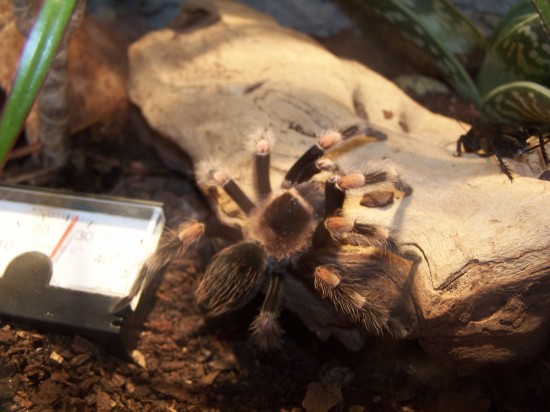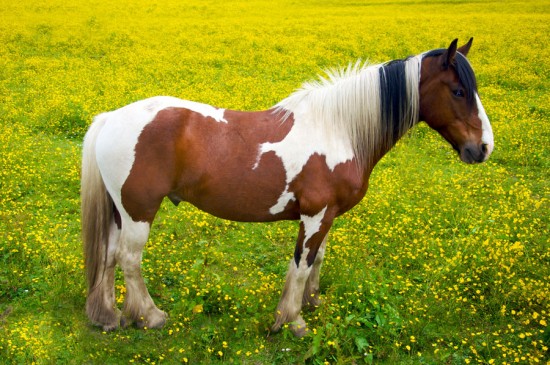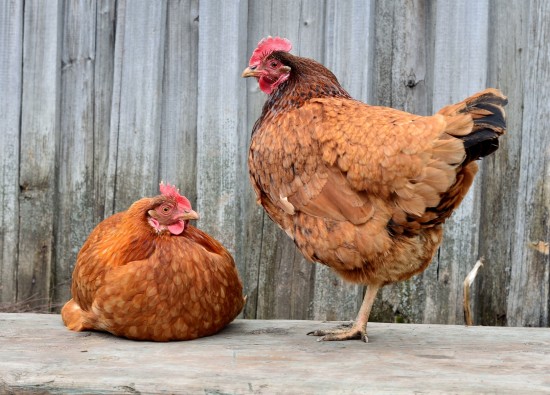

If you are considering buying a tarantula to keep as a pet, you have probably given quite a bit of thought to their feeding requirements and how to deal with feeding them. Tarantulas live mainly on live food, which of course comes with a whole set of challenges and considerations of its own that owners of pets that eat a pre-packed diet never even have to think of! However, feeding a tarantula doesn’t have to be difficult, and this article will provide some guidance for the first time would-be tarantula keeper on what tarantulas eat, and how to source food for them.
In the wild, tarantulas live on a range of insects and small mammals (such as mice) that wander into range of the tarantula’s hide or burrow and make contact with the silk tarantulas use to catch food. When the spider becomes aware of the presence of food nearby due to the vibration of the silk from contact with the prey, they watch and wait until the prey comes within range, and then pounce, injecting the unlucky victim with their venom to disable it. They will usually then cocoon the prey within their silk to begin to break down the body and start the digestive process, although this is not always the case. This process is simulated when feeing captive pet tarantulas, by introducing live food into their enclosure. Tarantulas will not usually eat dead prey or food offerings, and rarely recognise prey that is totally still, even if alive.
In captivity, the usual food for tarantulas consists of crickets, although many alternatives and supplemental insects are also available, including mealworms, cockroaches and various others. It used to be common practice to feed tarantulas live pinkie mice, although this practice is now illegal in the UK under animal welfare laws. It is, however, legal to feed dead pinkie mice to tarantulas, and tarantulas can often be tempted to eat even this dead prey if it is waved on a string in front of them to simulate live movement!
Crickets are the most readily available live food for tarantulas, and form the main part of their staple diet. It is important to ensure that any insects offered as food to a tarantula are small enough for them to easily manage, particularly in the case of small, juvenile spiderlings. Prey that is too large may pose a problem for your tarantula to manage, or they may simply not see it as prey at all, and avoid eating it.
How much any given tarantula actually eats or needs to eat depends on a wide variety of factors. The age sex, size, and nutritional requirements of each individual spider dictates how much and how often it will eat, and tarantulas often go for reasonably long periods of time without any apparent interest in food, while at other times they will eat prolifically for several days in a row. Some larger tarantulas will eat up to six crickets a week, while most adult spiders will eat about two.
Tarantulas will often fast before moulting or before laying eggs, and this is totally normal behaviour and not cause for concern. Tarantulas will sometimes fast for weeks or even months at a time, and this is only usually cause for concern if the fasting approaches three or four months and the spider is beginning to lose condition.
Like all animals, tarantulas need to consume water to survive! A small, low and shallow dish of fresh water is the usual means of water provision for fully-grown tarantulas, although various different options are available. Some tarantula owners use a special sponge saturated in water in place of a water dish, and special care should be taken to ensure that no water bowls in the tank pose a danger to small, young spiderlings that could potentially drown. It is generally advised that no water bowl or dish is wider than the leg span of the tarantula using it, to ensure the safety of your eight-legged pet!
It is important to feed fat, healthy crickets to your tarantula, as prey that is not nutritious will not provide your tarantula with all of the sustenance that they require. Depending on how long you keep your crickets before feeding them to your spider, you may have to feed the crickets themselves, on products such as vegetables.
Crickets should also be “gut loaded” before feeding to your tarantula. Gut loading refers to the process of feeding a highly nutritious solution to the crickets, in order to boost their nutritional content when they are eventually eaten. A good gut loading solution can be bought from most of the same retailers that will be able to sell you the crickets themselves.
Understandably, live insects such as crickets cannot be obtained quite as easily as the average bag of pet food, and you are unlikely to be able to pick up a box of live crickets in the supermarket! However, it is not hard to find live insects such as crickets for sale for your tarantula if you know where to look!
Many pet shops keep crickets in stock, or can order them in for you upon request. All exotic pet and specialist retailers also keep crickets and sometimes, other forms of live food, and you can even order live crickets online for delivery through the post!
It is not advised to feed wild-caught crickets or insects to your tarantula, as they may be carrying parasites or have been subjected to pesticide sprays and other toxins that can be dangerous to your tarantula when consumed.
 How To Keep Your Westies Coat Looking Great
How To Keep Your
How To Keep Your Westies Coat Looking Great
How To Keep Your
 Fundamentals – Wysong Dry Dog Food
Fundamentals – Wysong Dry Dog Food
Wysong is
Fundamentals – Wysong Dry Dog Food
Fundamentals – Wysong Dry Dog Food
Wysong is
 Some Horse And Pony Basics - Colours, Types And Markings
Some Horse And Po
Some Horse And Pony Basics - Colours, Types And Markings
Some Horse And Po
 How To Recognise That A Hen Might Be Egg Bound
How To Recognise
How To Recognise That A Hen Might Be Egg Bound
How To Recognise
 Attending Horse Shows
Attending Horse S
Attending Horse Shows
Attending Horse S
Copyright © 2005-2016 Pet Information All Rights Reserved
Contact us: www162date@outlook.com